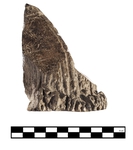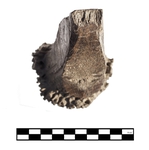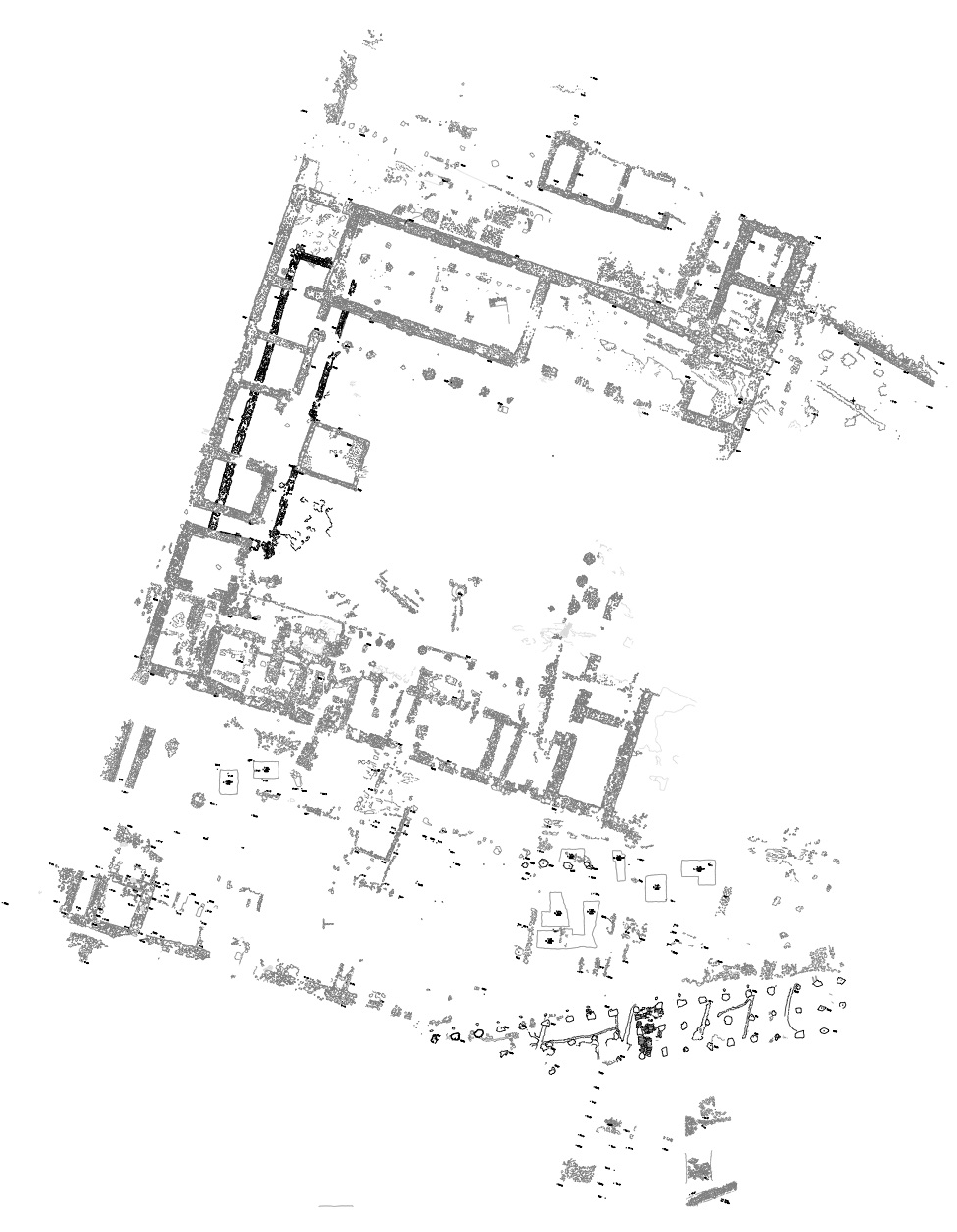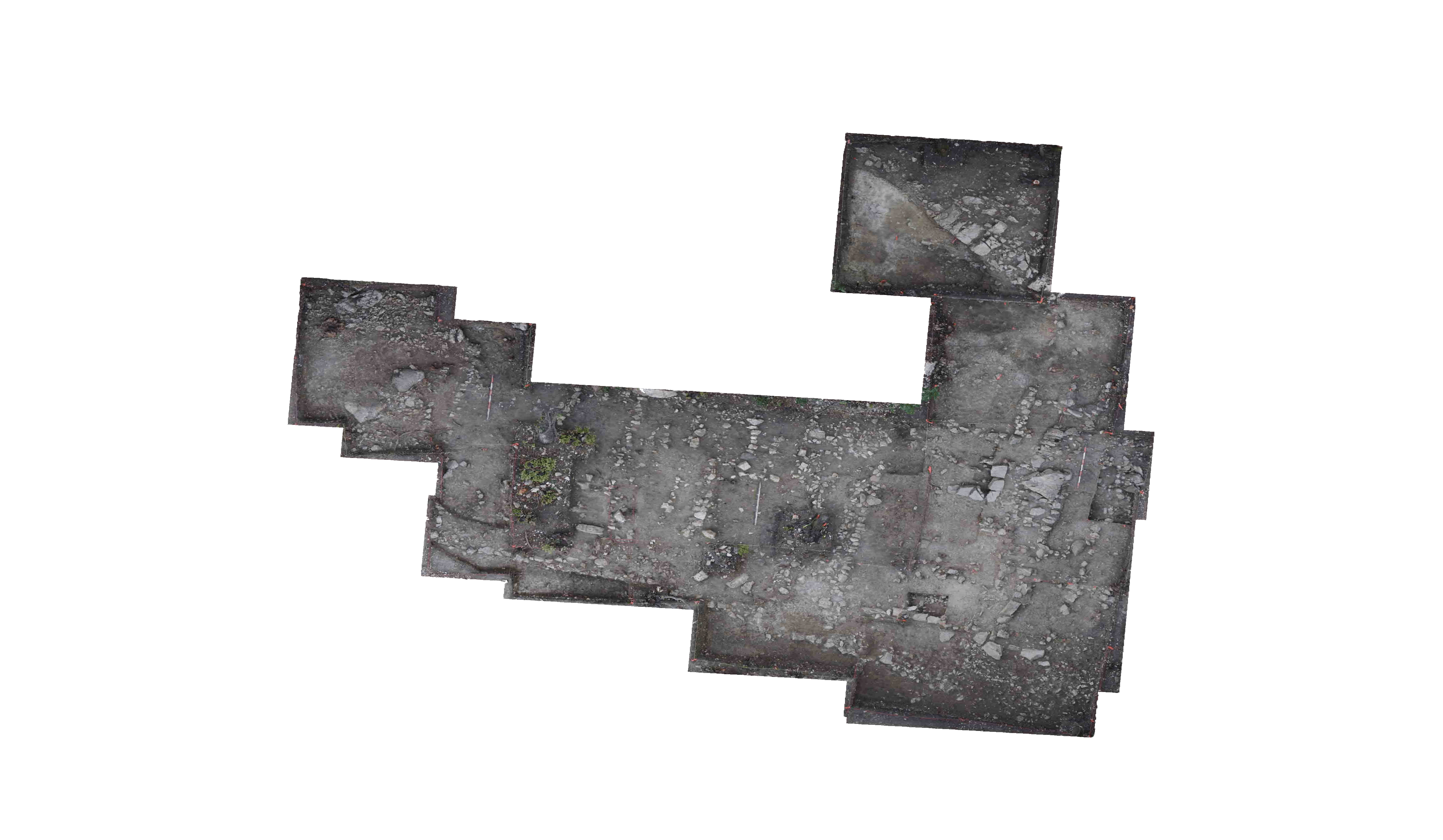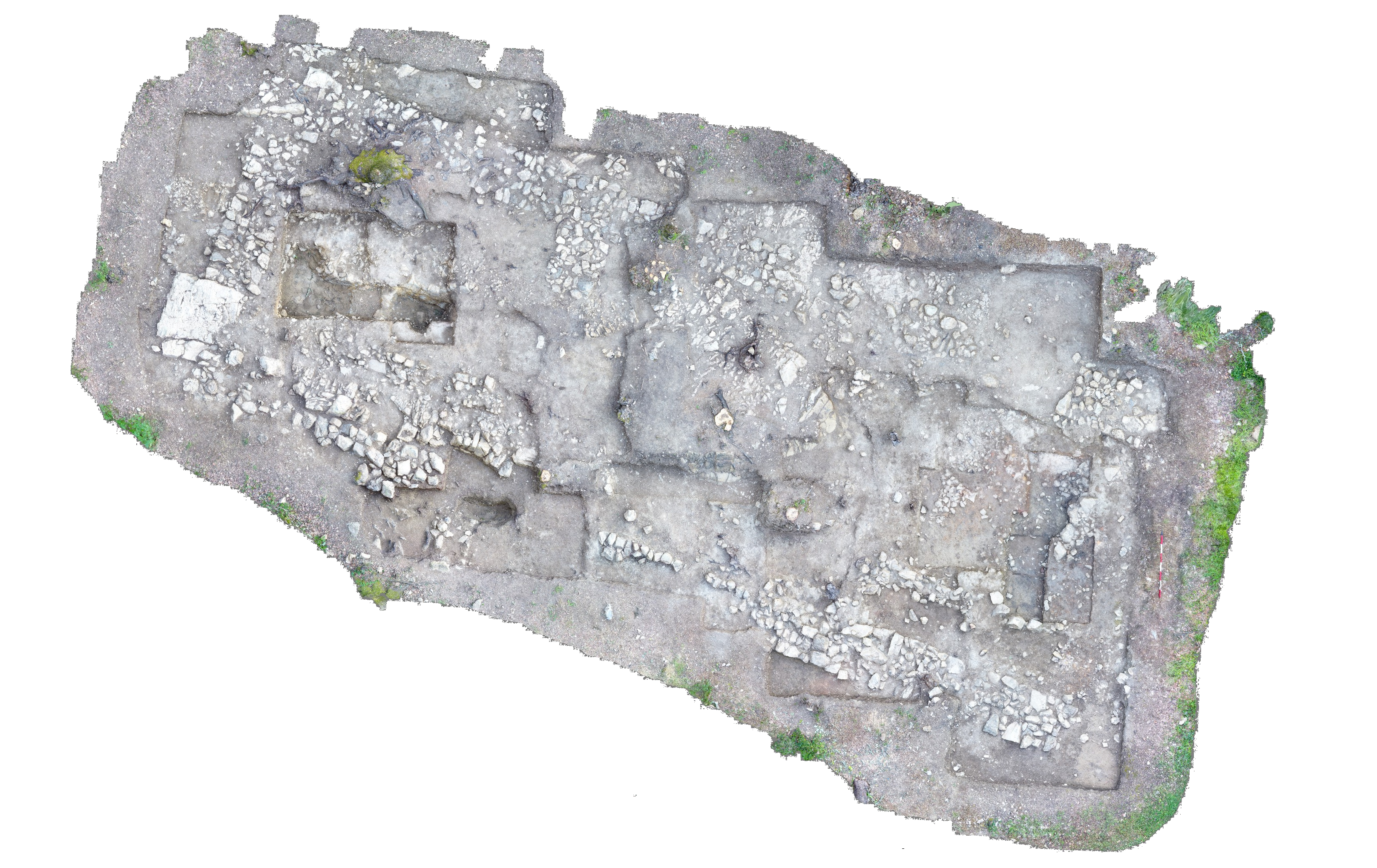Document Content
Introduction
Introduction
During the 2012 & 2013 seasons, a series of trenches were excavated north of the medieval road, which bisects Poggio Civitate, approximately 50 meters west of Piano del Tesoro. During the 2012 season, a series of linear stone packings were uncovered in CA 72 and 73 ( ARR IV and AEG VI ) which were further explored during 2013 excavations when trenches were placed to the north in CA 78 ( AJC V ) and south in CA 76 ( LHS II ). Here a partially preserved foundation was revealed indicating a light-framed structure. Based on the ceramics recovered from within this structure (e.g. 20130025
& 20130211 20130211 ) its occupation phase appears to be the same as the Orientalizing Complex on Piano del Tesoro. The ceramics evidence also points to the structure being used as a domicile.In addition to the domicile a large amount of production refuse was recovered from within the immediate area. Over 9 kilograms of ferric slag, a refuse of copper smelting, was uncovered, with the heaviest concentrations coming from CA 70, 71 and 74 ( AAF II , CGL I , CAC I ). Moreover, a large amount of worked and partially worked bone was found closer to the structure itself. Throughout the area of excavations many fragments of forni, crucibles, and tools such as 20120200
were recovered. This combination of materials has lead excavators to believe that workshop-like activities
were occurring within what may have been an Orientalizing domicile of a non-elite inhabitant of Poggio Civitate.
In 2014, trenches were placed further east moving towards the monumental complex in hopes of better understanding the light framed buildings in the area. However T-57 and T-59 ( AJC VI and KRK VII ) exposed parallel linear robust packings of stones. Due to the unusually rainy summer the extent of these packings were not well understood. In 2015 more trenches were opened to clarify these packings. T-69 & T-58 ( EMO VII , FGT III ) uncovered western linear packing that ran perpendicular and joined the ones found in T-57 and T-59. T-57, T-80, T-74,T-77, T-79, T-78, & T-81 ( AJC VI , AJC VIII , ASM I , PAM II , MLL III , KRK IX , AJC IX ) revealed the extent of the northern stone packing with a smaller perpendicular stone packing in T-74. In T-60, T-59, T-65, T-75, T-76, T-66 ( MLL II , KRK VII , JWM/KRC I , KRC I , KD III , KD II ) revealed the entire southern extent of the stone packings. There was no packing of stones between T-66 and T-81 in the east. It appears that excavators uncovered the foundations for walls of a monumental rectangular structure that was opened
to the east and had a dividing wall through the middle to separate front and back rooms of the structure. Based on chronologically diagnostic material found in a sounding done in T-58, the foundations appear to date to the earlier phase of the Orientalizing period, before the monumental complex on Piano del Tesoro.
Also in 2014, the aperture of a well with an open space around it was discovered (T-62 AEG VIII ). During the 2015 season the full extent of the well was revealed and documented ( AEG IX ). The well was in-filled with both decorated and non-decorated archaic period roofing material (e.g. 20150045 20150045 , 20150051 20150051 , 20150054 20150054 ). The first item thrown into the well was a large broken piece of worked travertine that most likely served as an altar ( 20150055 20150055 ). This intentional filling of the well points to the destructive nature of the end of the archaic complex as seen in the filling in of another well excavated in 1999 (Tuck et al. \x93An Archaic Period Well from Poggio Civitate: Thoughts on the Final Destruction of the Site\x94 2010) and also seen in a lens found by the
original excavators of Poggio Civitate which was filled in with a large amount of decorative terracotta (CA 2, CA 24, & CA 28- BH II , BB I , & EN I ). The 2015 well seems to be the most recent piece of evidence associated with the destruction of Archaic period complex and the scattering of the decorative material from the roofing structure.
The goal of T-82 will be to explore the area between the 2012/2013 and 2014/2015 excavations and better clarify the relationships between the archaic well and its open space around it and/or the relationship between EPOC 4 and the non-elite structures to its west.
2016 Goals
1. To explore the area north of the medieval road, laying between the non-elite Orientalizing domicile and the late archaic period well and reveal any new architectural features and topographic information that will help clarify the successive uses of this area.
2. To recover dateable material from a secure context to help better understand the chronology in this area.
3. To search for evidence of habitation in association with previous architecture and deposits of the area.
4. To better understand the stratigraphy and topography of the area.
| Descriptive Attribute | Value(s) |
|---|---|
| Document Type | Trench Book Entry |
| Trench Book Entry Date | 2016-06-11 |
| Entry Year | 2016 |
| Start Page | 3 |
| End Page | 12 |
| Title | Introduction |
| Descriptive Attribute | Value(s) |
|---|---|
| Is Part Of Vocabulary: DCMI Metadata Terms (Dublin Core Terms) | AJC X Vocabulary: Murlo |
Suggested Citation
Andrew J. Carroll. (2017) "AJC X (2016-06-11):3-12; Introduction from Europe/Italy/Poggio Civitate/Tesoro/Tesoro 82/2016, ID:709". In Murlo. Anthony Tuck (Ed). Released: 2017-10-04. Open Context. <https://opencontext.org/documents/9c0aaf11-0fc9-4a5d-9f8e-cac7133d8d64> ARK (Archive): https://n2t.net/ark:/28722/k26401k8r

Copyright License
To the extent to which copyright applies, this content
carries the above license. Follow the link to understand specific permissions
and requirements.
Required Attribution: Citation and reference of URIs (hyperlinks)








